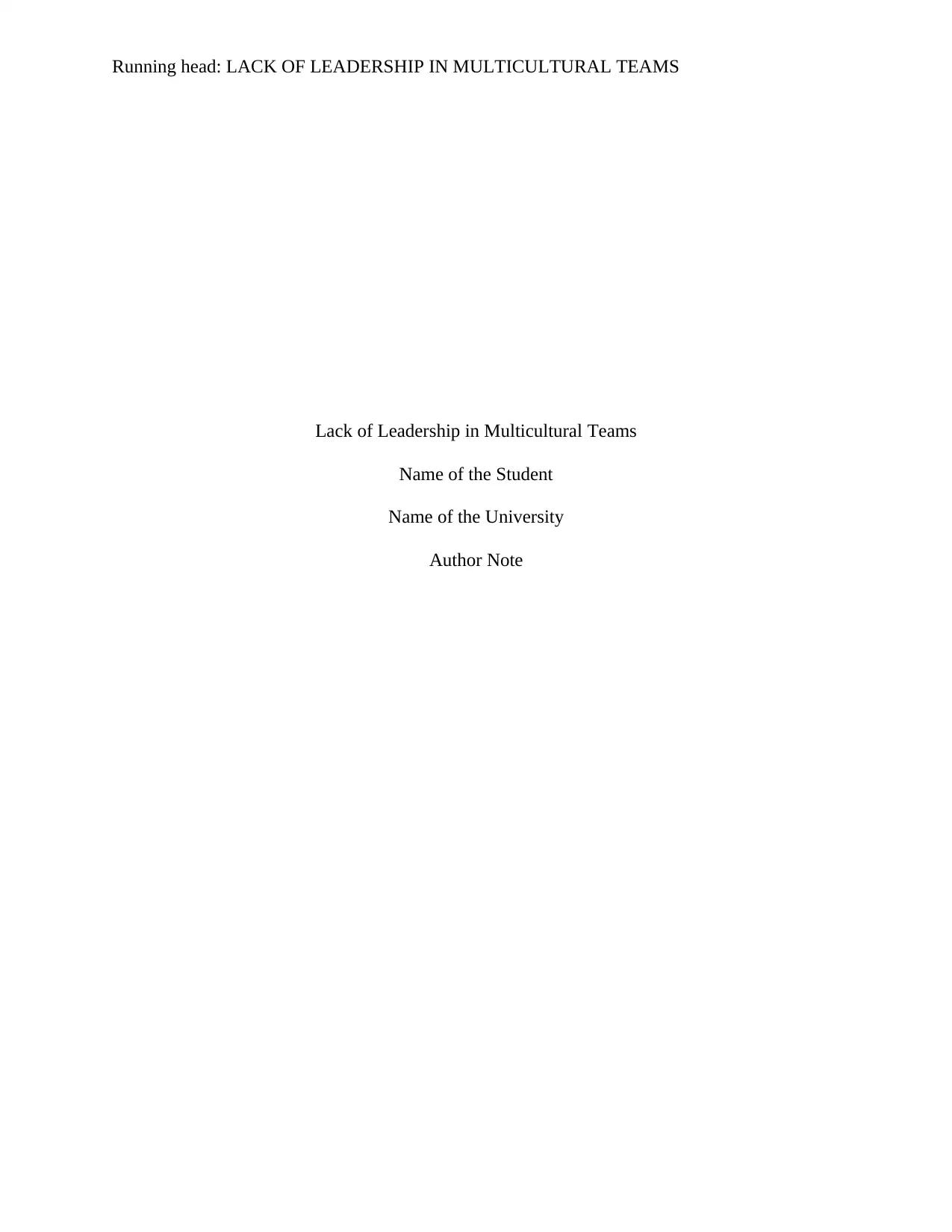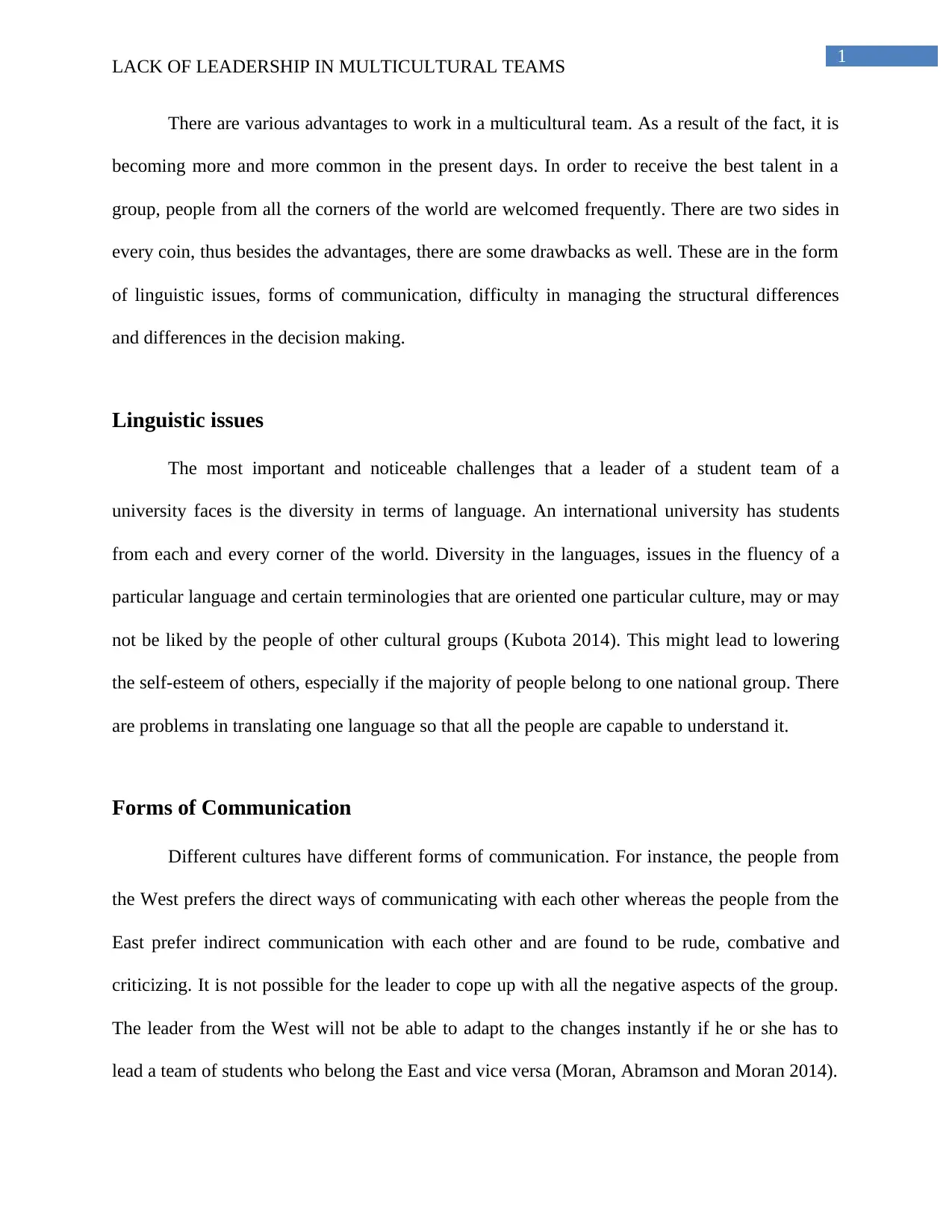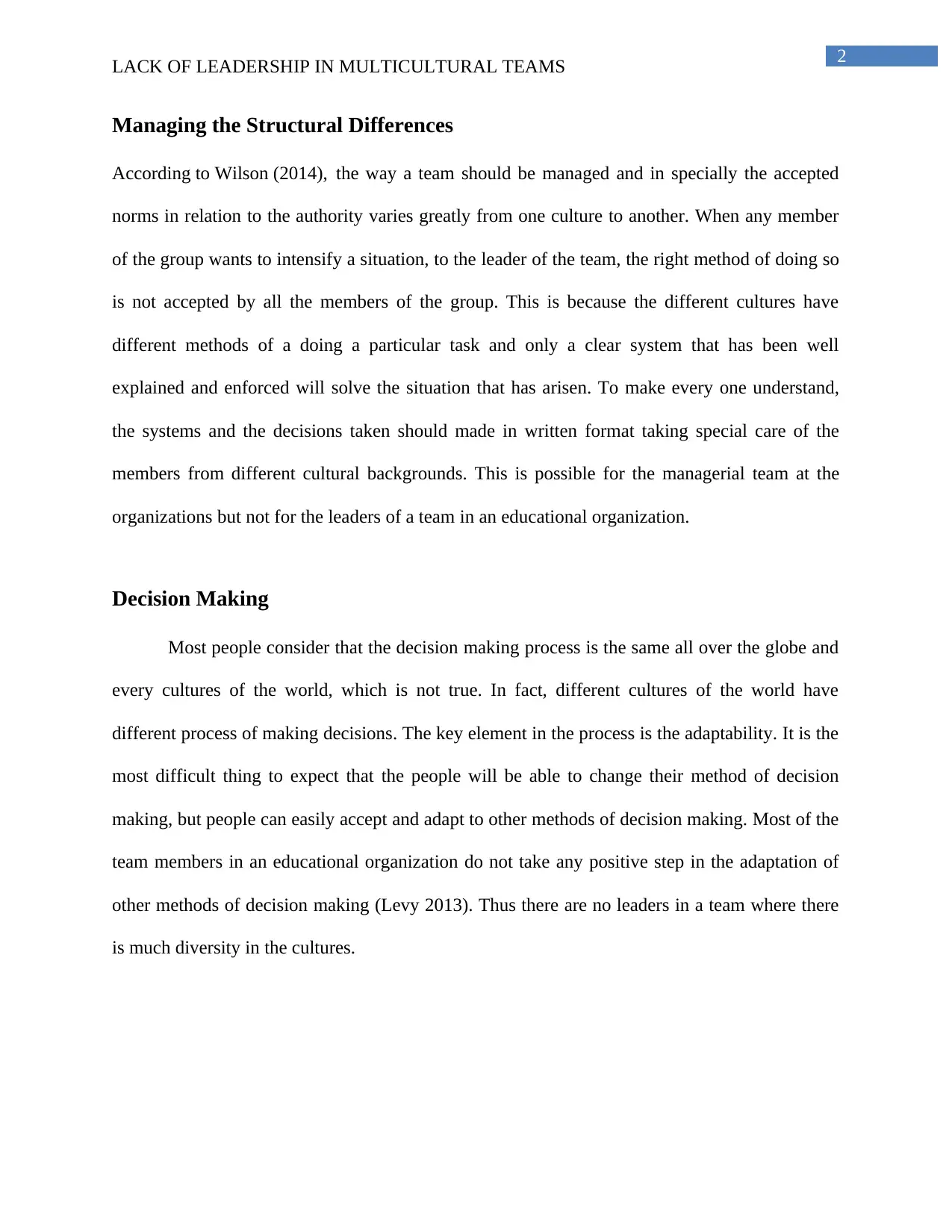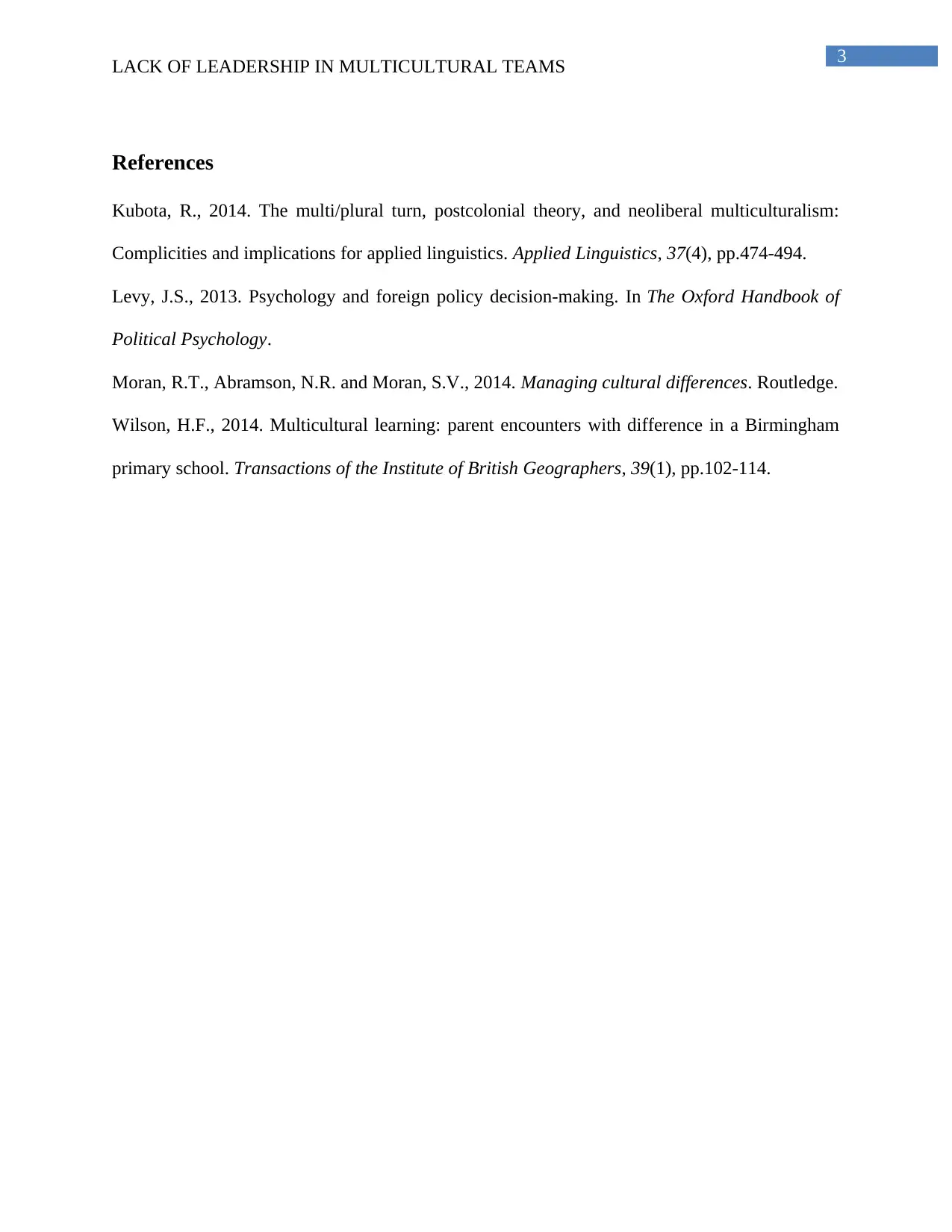Analyzing Leadership Failures in Multicultural Teams: A Case Study
VerifiedAdded on 2021/05/31
|4
|770
|40
Essay
AI Summary
This essay delves into the challenges of leadership within multicultural teams, highlighting key issues that hinder effective team performance. It identifies linguistic barriers, such as language diversity and cultural-specific terminology, as significant obstacles. The essay also examines communication differences, contrasting direct and indirect communication styles prevalent in Western and Eastern cultures, respectively. Furthermore, it addresses difficulties in managing structural differences, where varying cultural norms impact authority and task management. The decision-making processes are also explored, emphasizing the need for adaptability and understanding of diverse approaches. The essay concludes by emphasizing the lack of leadership as a result of the diversity in a team and how these factors contribute to leadership deficiencies, providing a comprehensive overview of the complexities faced by leaders in diverse team environments.
1 out of 4











![[object Object]](/_next/static/media/star-bottom.7253800d.svg)